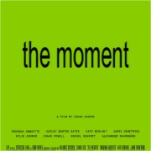Powaqqatsi

As Naqoyqatsi, the third installment in the "qatsi" trilogy, makes its way into select theaters, director Godfrey Reggio's first two films—1983's Koyaanisqatsi and 1988's Powaqqatsi, the release of which has been held up for years for legal reasons—are finally being released to DVD. The three films are anomalies in world cinema: They're slick, expensive, avant-garde essay-poems, seen by far more people than would ordinarily queue up for such arty abstraction. Their popularity, due in no small measure to the catchy Philip Glass scores and plenty of eye-popping camera tricks, leads some viewers to regard Reggio's achievement with the same wary eye cast upon The Three Tenors, or Kokopelli figurines. Reggio invites suspicion with his titles alone. Derived from the Hopi language, Koyaanisqatsi roughly translates as "life out of balance," and Powaqqatsi as "life in transition," which makes the films' cockeyed images of the natural and man-made world into an unambiguous indictment of the latter. Without the titles, though (and without the decades of screenings at college film programs and environmental conferences), their message isn't so obnoxiously definitive. Koyaanisqatsi especially demands respect, as the increasingly frenetic Glass music and Ron Fricke's striking compositions make urban decay and human gaudiness seem almost as beautiful as stark canyons and tumultuous ocean waves. Any one of Koyaanisqatsi's short sequences could feed a hundred experimental films—or a hundred thousand TV commercials. Nevertheless, the mesmerizing, overwhelming effect of Reggio's union of sound and image isn't to be discounted, nor is the film's value as a life study of the fashions, fads, foods, and factories of the late '70s and early '80s. Powaqqatsi, in spite of a more elaborate, lovelier Glass soundtrack, doesn't work as well. The problem lies partly with the subject matter, which moves from the familiar landscapes and cityscapes of the U.S. to the exotic and jarring workplaces and villages of the Third World, where the pictures are harder to put into context. More damaging is the absence of Fricke, whose cinematography and editing defined Koyaanisqatsi's visual grammar. The second film seems less purposeful: The shots of squalor and industrialization-run-amok have an almost random feel. At times, however, it's still incredibly powerful. Reggio has a flair for iconography, and whatever external baggage Koyaanisqatsi and Powaqqatsi may carry, they should be admired for their vivid, astonishing illustrations of humanity consuming itself in clouds of its own smoke and debris.







































